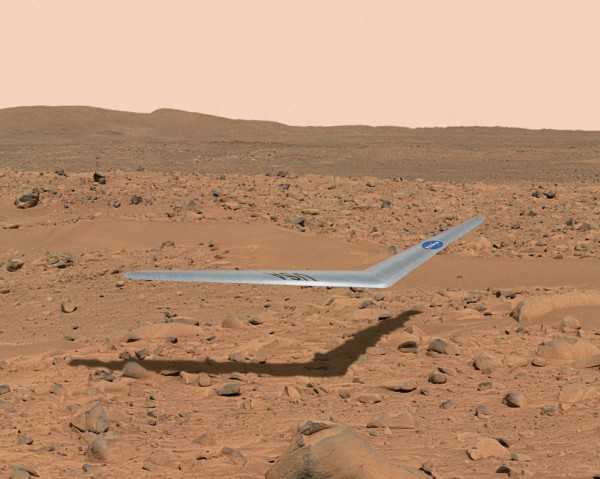
For several decades, Mars has been a busy place, with orbiters, landers, and rovers providing unprecedented views of the Red Planet. Another exciting possibility which has yet to be realized is an airplane, which could soar through the atmosphere, showing Mars in a way not possible before—closer than an orbiter, but unique from a lander or rover stuck on the surface. NASA is now testing just such a concept, the first Mars airplane which could fly in the Martian skies in the 2020s.
The aircraft concept, called the Preliminary Research Aerodynamic Design to Land on Mars (Prandtl-m), is a flying wing prototype which could stay aloft in the thin Martian atmosphere. The first major test is planned for later this year, where a prototype will be released from a high-altitude balloon at about 10,000 feet altitude, where conditions are similar to the atmosphere on Mars.
“The aircraft would be part of the ballast that would be ejected from the aeroshell that takes the Mars rover to the planet,” said Al Bowers, NASA Armstrong chief scientist and Prandtl-m program manager. “It would be able to deploy and fly in the Martian atmosphere and glide down and land. The Prandtl-m could overfly some of the proposed landing sites for a future astronaut mission and send back to Earth very detailed high-resolution photographic map images that could tell scientists about the suitability of those landing sites.”
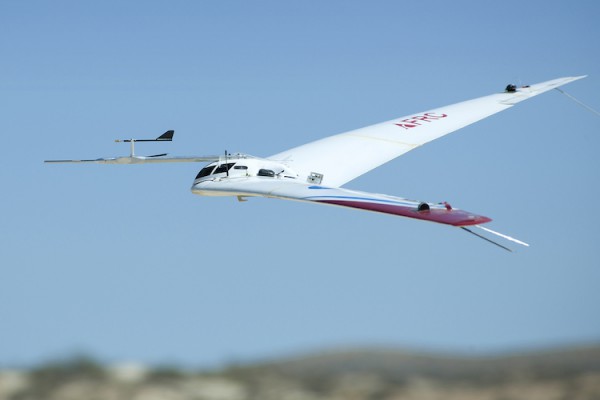
The tests will help scientists and engineers make modifications to the design, which would enable it to be folded into and then deployed from a 3U CubeSat in the aeroshell of a future Mars rover (a 3U CubeSat is three CubeSats stacked together, and CubeSats will be used for the Mars missions as well, such as InSight).
“It would have a flight time of right around 10 minutes. The aircraft would be gliding for the last 2,000 feet to the surface of Mars and have a range of about 20 miles,” Bowers said.
“The actual aircraft’s wingspan when it is deployed would measure 24 inches and weigh less than a pound. With Mars gravity 38 percent of what it is on Earth, that actually allows us up to 2.6 pounds and the vehicle will still weigh only 1 pound on Mars. It will be made of composite material, either fiberglass or carbon fiber. We believe this particular design could best recover from the unusual conditions of an ejection,” Bowers added.
The additional weight wouldn’t even add to the cost of the mission, since the Prandtl-m could ride in a CubeSat as ballast aboard the aeroshell/Mars rover piggyback stack.
Before the mission itself, at least three tests in Earth’s atmosphere are planned.
As Bowers noted: “We have a number of summer community college students coming that are going to help us design and build the aircraft that will complete the first phase of the mission. We’re going to build some vehicles and we are going to put them in very unusual attitudes and see if they will recover where other aircraft would not. Our expectation is that they will recover. As soon as we get that information, we will feel much better flying it from a high-altitude balloon.”
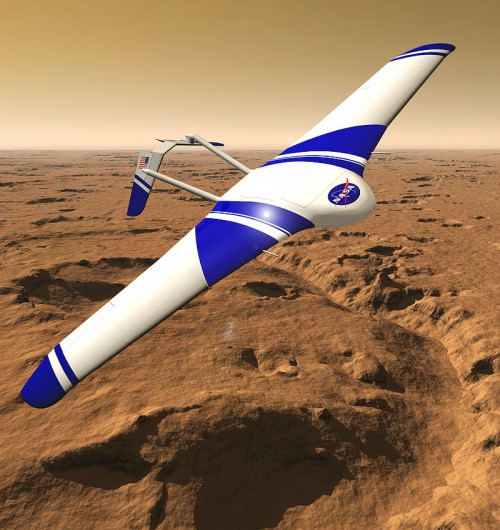
The mission will also use GPS for navigation purposes.
As Bowers explained: “We are going to use GPS initially, but obviously there is no GPS on Mars, so later on we will have to find something else for navigation. But the little autopilot that provides the waypoint navigation, that’s one of the things we’re going to exercise on a research vehicle and then on the prototype that flies on a future balloon flight.”
At least two balloon flights will be funded over the next several years by The Flight Opportunities Program, which is managed at NASA Armstrong. Following that, a sounding rocket may also be funded, which would demonstrate how the airplane would actually fly on Mars. The test flights will be at either Tucson, Arizona, or Tillamook, Ore.
There might also be some science payloads on the test flights.
“We could have one of two small science payloads on the Prandtl-m on that first balloon flight,” Bowers said. “It might be the mapping camera, or one might be a small, high-altitude radiometer to measure radiation at very high altitudes of Earth’s atmosphere. Eventually the aircraft may carry both of them at the same time.”
A second similar flight is planned for next year: an aircraft capable of returning to the launch site on a flight that could be as long as five hours as it glides back to Earth.
“We will do the same thing again with a balloon flight to about the same altitude,” Bowers said. “On that mission Prandtl-m would actually be inside a CubeSat container. The balloon would drop the CubeSat container and then the aircraft would deploy from the container right after the drop, unfold and fly away.”
If the first two tests are successful, then there will be a third test, which could use a sounding rocket capable of going to very high altitudes.
“That mission could be to 450,000 feet and the release from a CubeSat at apogee,” according to Bowers. “The aircraft would fall back into the Earth’s atmosphere and as it approaches the 110,000-to-115,000-feet altitude range, the glider would deploy just as though it was over the surface of Mars. If the Prandtl-m completes a 450,000-foot drop, then I think the project stands a very good chance of being able to go to NASA Headquarters and say we would like permission to ride to Mars with one of the rovers.”
The idea for the Prandtl-m has been credited to a brainstorming session between Bowers and colleague Dave Berger, a NASA Armstrong aeronautical engineer who specializes in flow physics and propulsion and works with the Education Office. They wanted to do a project for college students to participate in, and the Mars airplane idea was born.
Besides Prandtl-m, there are other Mars airplane concepts, including the Aerial Regional-scale Environmental Survey (ARES). Flying above the Martian surface like a bird has been a dream of many for a long time, and now that dream may finally be close to being realized.
Want to keep up-to-date with all things space? Be sure to “Like” AmericaSpace on Facebook and follow us on Twitter: @AmericaSpace
Missions » MAVEN »




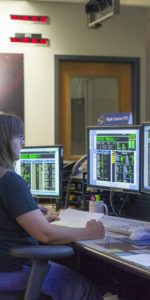
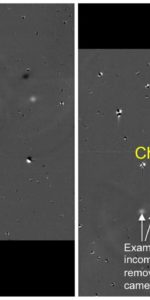
One Comment
One Ping
Pingback:Flying the friendly Martian skies: NASA to test Mars airplane prototype